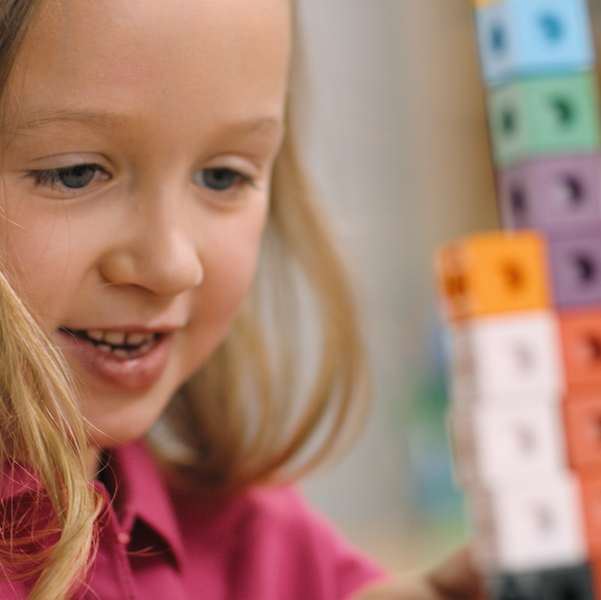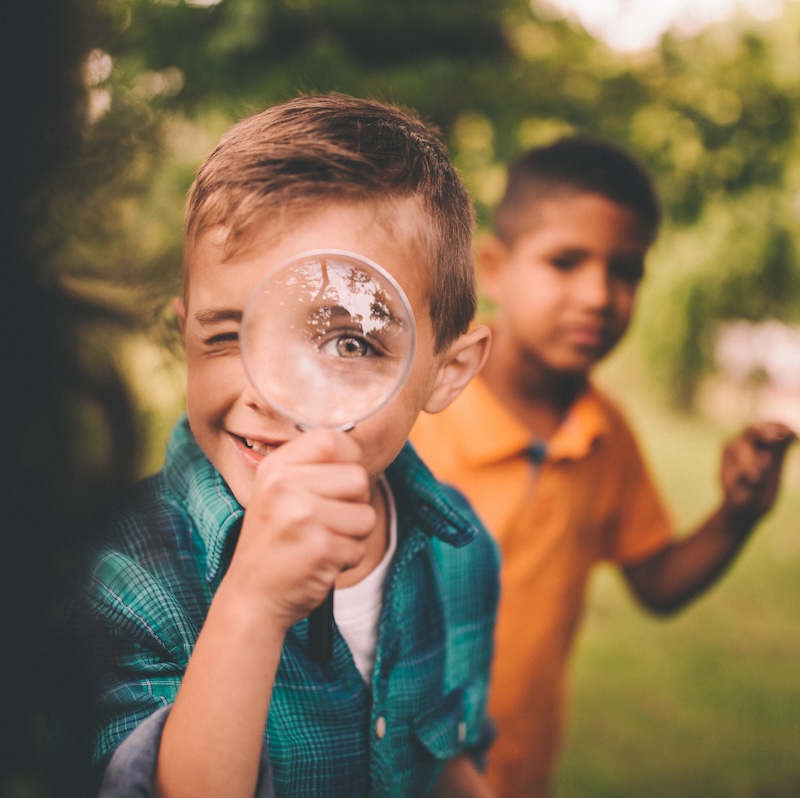
5 at Home Learning Activities to Teach Scientific Concepts to Your Preschooler
April 8, 2020
Learning at Home Doesn’t Always Have to Look Like School, Sometimes It Just Looks Like Fun
Preschool children are naturally curious and open-minded, which makes them perfect scientists. They are also risk-takers and unafraid of being wrong, which allows them to make predictions, explore and communicate ideas and take chances.
Science is a natural extension of your preschooler’s world, and she is curious and excited by the things she sees as she explores it. Provide her with easy access to scientific tools such as binoculars, magnifying glasses, rulers and balance scales. But most importantly, let her lead the exploration!
How Can Parents Encourage Their Budding Scientists?
The trick is to avoid lecturing and providing all of the answers. Studies have revealed that young children fail to think creatively or critically when they are told what to do. Allow them as much free rein as you can, as even simple instructions can discourage them from investigating and testing their ideas.
It is also essential to avoid dumbing down scientific language. Use scientific jargon and call concepts and items by their real scientific names.
Provide opportunities for your child to explore science concepts and allow him the space to investigate on his own.
Here are 5 scientific concepts and ideas and suggestions for exploring each of them to help you out.
Organizing and Classification
Organizing is a basic science concept. Scientists organize natural phenomena by sorting and classifying them. Organizing these living things by their shared features makes the study of science more easily managed. For example, scientists organize plants, animals, species and even diseases to study them.
How You Can Introduce Organizing and Classification:
Give your child a collection of items – shells, rocks, leaves or even fruits and vegetables to sort into groups.
Ask questions about why she sorted them the way she did.
When baking with your child, ask them to sort the wet and dry ingredients. She might put the eggs with the dry ingredients. Rather than correcting her, ask her why.
Observe the wildlife around your house – insects, spiders and birds can all be classified.
Cause and Effect
The study of science frequently focuses on finding explanations. Every effect, the argument goes, can be linked to a cause. Scientists also understand that nature behaves in very predictable ways, and they will apply what they have learned about natural phenomena to other things.
How You can Explore Cause and Effect:
- Combine water and shampoo and hand your child a whisk to create bubbles.
- Let them experiment with wave-making in the bath or the pool.
- Combine baking soda and vinegar to see the reaction and then add soap to observe another.
- Put an egg in water and have your toddler add salt until it floats.
- Provide musical instruments to demonstrate cause and effect. How can your child make each instrument make noise? How does that noise change when she does something different with the instrument?
Communication and Inference
Communication and inference are both critical components of the scientific process. Inference is what allows scientists to make assumptions and create informed hypotheses. Communication is the sharing of ideas through talking and listening, as well as drawing and labeling pictures and graphs.
How You Can Foster Communication and Inference:
- Encourage your child to draw pictures of what he observes.
- Ask questions about her observations and predictions.
- Provide your child with a mystery bag and encourage him to guess what is in the bag by its size, shape or smell.
- Encourage the use of descriptive words in your child’s exploration, for example, crunchy, smooth, rough, light, heavy, floats and sinks.
Hypotheses and Testing
Scientists spend a lot of their time turning predictions into hypotheses and then either proving or disproving their hypotheses through testing. These are both critical components of the scientific method. While your child might not consciously understand the importance of scientific method, he can use them in his exploration of the world. Later, the scientific method will be a natural part of his thinking and understanding. The other valuable lesson here is that of learning through failure. Your child should never be afraid to fail; it’s the quality that sets the world’s most creative and innovative thinkers apart from everyone else.
How You Can Encourage Hypotheses and Testing:
- The bathtub is a great place to introduce hypotheses. Which objects will float, and which will sink? Let her test out a variety of objects.
- Build structures with wooden blocks or a deck of cards to see what will stay up and what will collapse.
- Let your child play with ice cubes and describe them. Put them in bowls. Put the bowls in the shade and in the sunlight – what happens? Try adding warm water to one and cold water to another. Which one will melt faster?
- Provide some paint (finger paint works really well for this). Let your child experiment with combining colors and predicting the outcome.
- Plant seeds, observe and hypothesize about the changes that occur each day.
Measurement and Change
Measuring using numbers, sizes, weights and even height are all critical scientific concepts. Measurement allows you to introduce scientific tools such as rulers and weight scales and also practice early graphing skills. Observing change will enable children to create and test hypotheses and encourages them to observe their world more carefully.
How You Can Demonstrate Measurement and Change:
- Help your child make simple bar graphs with charts and stickers to record observations.
- Provide her with a tape measure to compare the sizes of apples or other objects.
- If you have a balance scale, encourage him to try comparing the weights of different objects.
- Leave fruit out to ripen and have your child observe the changes and tell you when it is ready to eat.
Observe the moon over a few weeks and have your child draw the changes. - Water is great for encouraging your child to observe and understand change as it boils, melts, evaporates, freezes, or condenses.
RECENT POSTS

A St. Patrick's Day Scavenger Hunt Guide for Kids
Unleash MagicSt. Patrick's Day is around the corner, and what better way to infuse some magic into the celebration than with a
Read More
Crafting Summer Memories with a Kid-Friendly Memory Journal
Summer Memories As the sun-kissed days of summer unfold, so do countless moments of joy, laughter, and adventure for our
Read More

Cool Summer Science Experiments for Kids
Summer Science Fun Summer break is the perfect time to turn your home into a mini laboratory, sparking curiosity and
Read More

Nurturing Positive Sibling Relationships
Siblings Harmony Welcome to the fascinating world of sibling dynamics, where the bonds formed can last a lifetime. In this
Read More

